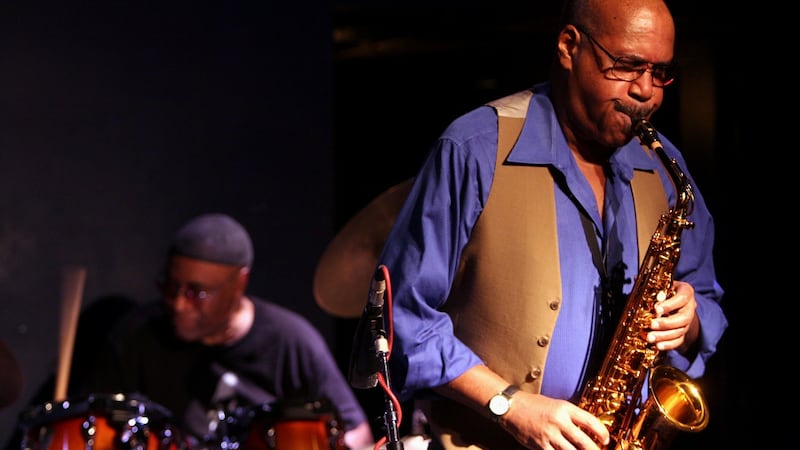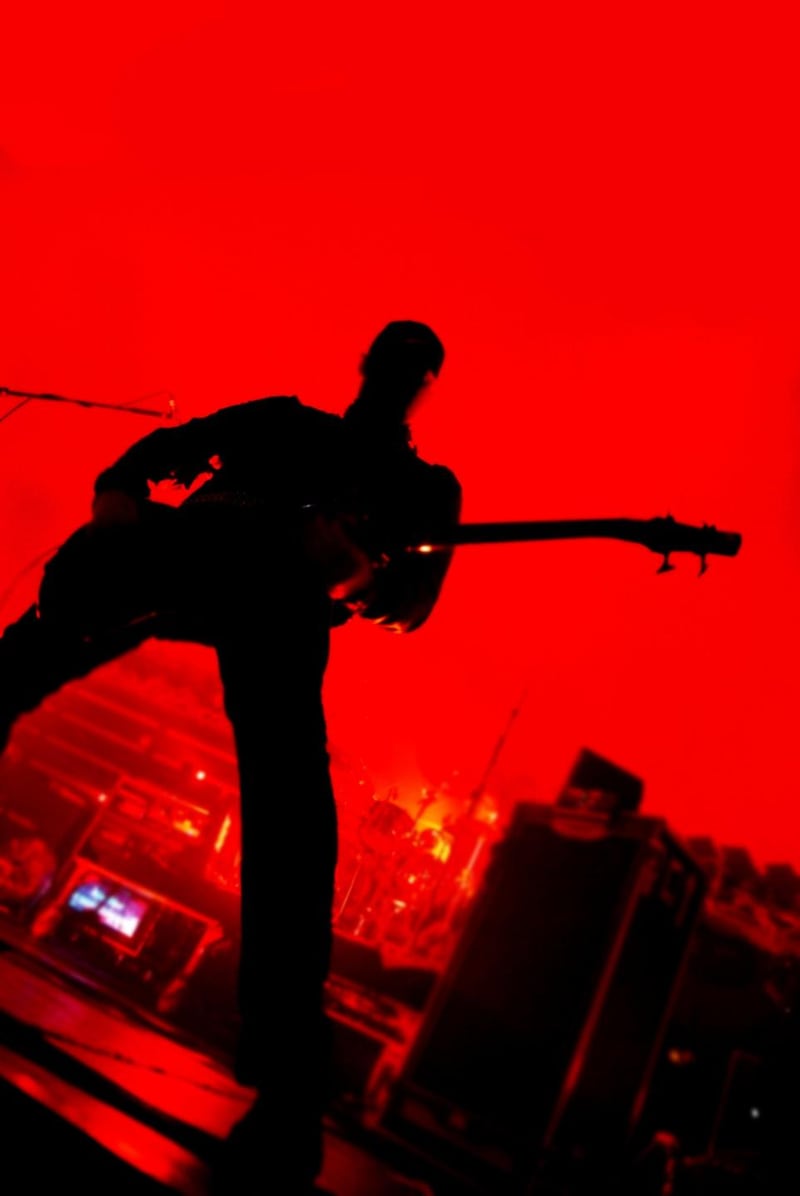In these heady days of instant musical gratification, when the entire works of Mozart, Coltrane, Lennon and McCartney can be summoned magically to our pockets for little or nothing, it’s worth pausing to remember where music actually comes from. Recorded music is so pervasive in the modern urban environment – from restaurants feeding us muzak to re-worded pop classics urging us to buy cars and cleaning products – it’s easy to forget that this marvellous art form, surely the oldest and most emotionally direct of our species’ artistic accomplishments, starts with, you know, musicians.
Until relatively recently in human evolution, the only way to hear the eye-wateringly beautiful sounds these musicians make was to be in the same room as them. Now, after little more than 100 years of recording technology, music is in danger of becoming a solitary, onanistic indulgence, a disembodied effusion of pleasing noise squeezed out through headphones and deployed as the soundtrack to our daily commute, delivering what Barthes called “a transient moistening of the soul” between breakfast and work.
Don’t get me wrong. I love records, and I have the groaning shelves and the bulging hard-drives to prove it. But recorded music, however good it is, just doesn’t enter the body in the same way that live music does, and we risk losing something fundamentally human and infinitely valuable if we allow this vital connection between musicians and audience to pass into history. Yes, it’s that serious.
The Pink Elephant
I can still remember the moment when the penny really dropped for me. It was late one night in the summer of 1986, in what was then called the Pink Elephant, which had been transformed for the weekend into the after-hours club of the Dublin Jazz Festival. With their official concerts over, a group of musicians – a mix of locals and visiting Americans – were crowded onto a small, makeshift stage on the ground floor, jamming for the fun of it on standards they all knew. When saxophonist Sonny Fortune got up and started to play, the hundred or so of us in the room knew we were witnessing something special. Here was this Philly-born disciple of Coltrane reeling off chorus after chorus of astonishing, never-before-heard music, and the power of it, the generosity of his effort, the sheer swagger of a great musician in full flight, was electrifying. I was close enough to see the sweat on his brow and feel the blast of air from his horn, and I became aware of a collective energy in the room around me, an energy that drove Fortune to ever more furious, glorious flurries of melody. For that moment, we were all in it together, musicians and audience locked in a musical embrace. It was nothing less than the sound of love, conjured in one unrepeatable moment in a small, gaudily decorated room in central Dublin, and I never forgot it.
Since then, I have been seeking out that experience wherever and whenever possible. Sure, I have learnt a lot, and derived a lot of pleasure, from the records I’ve bought, but no recorded music – even that of the great John Coltrane himself – can compare to the sensation of being in the room when that column of air is vibrating in a bent brass tube, when that cymbal is splitting the air like lightning, when that piano is conjuring layers of heart-rending harmony from felt and wood and steel.

Now, this isn't a polemic in praise of jazz – not this time – but if you'll forgive the diversion for a moment, the reason I and others have been drawn to improvised music is because to attend a good jazz concert is to witness this moment of creation. Hearing Keith Jarrett play a solo (as a lucky few did last year at the National Concert Hall) is like being in the room when McCartney wrote the first lines of Yesterday, or with Beethoven when the opening cadence of the Fifth Symphony popped into his head. Jazz is the art music of our times, the successor to so-called classical music because, at its best, it's a conversation amongst equals, allowing each performer the freedom to express him- or herself, rather than obeying the dictats of some hidden composer. Okay, diversion over.
The point is, we need to rethink the way we consume music or risk losing it to the forces of cultural gentrification. And I’m not talking about the annual excursion to a muddy field to hear the latest pop acts go through the motions, or parting with extravagant sums to stand with thousands of others in a warehouse venue listening to revivified heritage acts doing it “just like the record”. I’m talking about getting out there on the front lines, checking out what the musicians in our own communities are up to. Whether its punk or trad or avant-folk, there are, I guarantee it, great musicians living near you who are turning up every week to perform in some makeshift venue, putting their hearts and souls into music with little hope of a return. And they’ll be only too delighted to see you.
It’s a perversity of the 21st century music industry that, though our lives are saturated with recorded music, musicians are making less and less every year from recording it. Chris Thile, the acclaimed American mandolinist, told me wearily last year how he and other working musicians like him are spending more and more time on the road because that’s the only way they can earn a living. With recorded music being given away (it’s not free, you understand, but given to us in return for our attention to the commercial messages that litter its delivery platforms), the life of a musician, particularly outside the gilded ranks of the superstar pop acts, is becoming increasingly precarious.
Spotify plays
To earn the average industrial wage, which in Ireland in 2016 was €36,919, a musician would need to sell around 7,000 CDs at €15 a pop (assuming they make about €5 per CD, selling them directly at gigs). But no one is buying CDs anymore. To make the same amount from plays on Spotify, estimates vary and are hotly contested, but, according to David McCandless’s excellent data visualisation on the Information is Beautiful website, it’s somewhere north of 39,000,000 plays.
In contrast, an ordinary decent musician could earn the same if they played three or four gigs a week that paid an ordinary, decent fee – say €200. In fact, according to the Central Statistics Office, the average earnings in arts and entertainment are a good deal lower than the average industrial wage, but you get the point. If we spent more time going to gigs, and less time passively consuming the recorded music being pushed at us by multinational corporations, our cultural lives would be richer, and ordinary, decent musicians – the ultimate source of all this music – would make a living wage.
Staying at home, of course, has got a lot more interesting in the last 30 years. When I first started going to gigs in the mid-1980s, home wasn’t half as exciting. There were four or five channels on the small cathode ray tube in the corner of the sittingroom, and a rotary dial phone on the hall table, so we were driven outdoors in search of entertainment. Music was the gravitational force that brought us all together, and most of the friendships we made then were forged at the back of some sweaty, disreputable venue, with a pint in one hand and a flyer for the next gig in the other.
Nowadays, it takes a little more effort to overcome the mysterious force that adheres the corduroys to the sofa, but if we don’t get out there and support the musicians in our own communities, we will have no one but ourselves to blame when we turn around and find them gone.
[ surveymonkey.com/r/imrovenueawardsOpens in new window ]
Send 'em home sweatin' - where to catch local live sessions

Listen at Arthur’s
Arthur’s Pub, 28 Thomas Street, Dublin, Wednesday February 21st
Composer Dylan Rynhart's monthly salon is a deliberately genre-blind miscellany of high-quality acts – just check your preconceptions at the door and embark for musical destinations unknown. And if you don't like what you're hearing, never mind, there'll be another act along in a few minutes. More at listen.ie
Kaleidoscope
Bello Bar, Portobello, Dublin 8
This long-running rattlebag of classical, contemporary and improvised music generally happens on the first Wednesday of the month in the Bello Bar, but the next event is on Thursday February 1st in the Sugar Club on Leeson Street, featuring music from Astor Piazzolla, contemporary vocalist Michelle O'Rourke and Conor Guilfoyle's jazz octet. More at kaleidoscopenight.com
Homebeat
Since 2011, Homebeat's events have become a reliable platform for visceral Irish and international musicians. Using unusual venues, their gigs and their festivals – Another Love Story and Fading Light – provide a rare intimacy for the performer and the audience which allows you to fully immerse yourself in the music. Check out homebeat.ie for upcoming events.
Hidden Agenda
On the more hectic and sweatier side of live music, Hidden Agenda book some of the best techno, electronic, house and hip-hop acts for Irish festivals and music venues. On Saturday January 27th, they're bringing DJ Deece to Wigwam in Middle Abbey Street, Dublin. Their involvement in Metropolis Festival and Dublin City Block Party means that their productions have increased in size but their name is a guarantee for a raucously good time. More at hiddenagenda.ie
An Góilín
Teachers’ Club, Parnell Square, Dublin 1
An Góilín's weekly Friday night singing sessions are open to all, and to singers of songs in any language. It's a mecca for singers in search of new material, for writers in search of someone to animate their work, and for punters who like their songs bare-boned and (usually) bereft of musical accompaniment. Their annual weekend festival, Sean Nós Cois Life, is the ultimate knees-up where those voluminous backstories get a full and unfettered airing. More at goilin.com
The Session with the Pipers
The Cobblestone, Smithfield, Dublin
This session, hosted by Na Píobairí Uilleann on the first Tuesday of every month in Dublin's Cobblestone, is a must for lovers of the pipes, but also for those who like their piping shaken and stirred by accompaniment. Each session is anchored by a piper, with usually three other musicians and sometimes a singer in the mix. Seriously tasty musical collaborations abound in this finely curated session. More at pipers.ie























